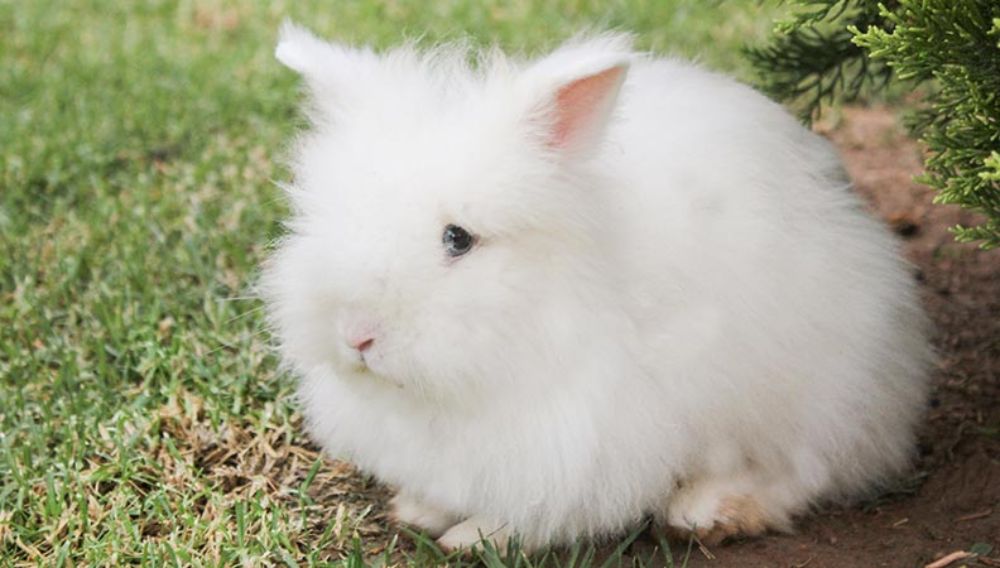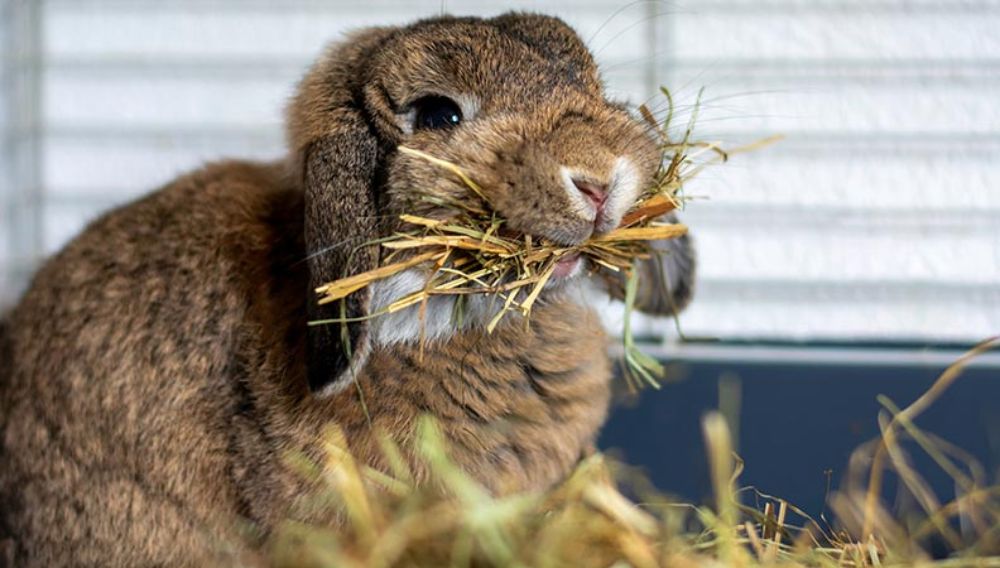
Gastric stasis (or gastrointestinal (GI) stasis) is one of the most common problems that can affect rabbits. It's a serious condition that can be fatal if left untreated. Gastric stasis rabbits must receive emergency treatment within a couple of hours of them not eating for a successful recovery.
If you suspect your bunny might be suffering from gastrointestinal stasis, contact your vet immediately!!
What Causes Gastric Stasis?
Rabbits have a gastrointestinal system that’s designed to be in constant movement (peristalsis). Anything that slows or stops this movement causes reduced gut mobility (known as GI stasis). GI or gut stasis in rabbits can result if the rabbit is ill, is in pain or stressed. A low fibre diet, lack of exercise, overheating and rabbits eating chilled or frozen food are other causes of stasis in rabbits.
A rabbit’s digestive system constantly contains food, faecal (poop) pellets and hair ingested through grooming. Sometimes hair may accumulate in the stomach and cause GI stasis. If the rabbit’s hair dries out due to eating or drinking less than normal, this can lead to a fur blockage and stasis (especially in long-haired rabbits). Dental pain, an illness or stress may be the primary cause for your bunny not eating or drinking, so these factors will need to be addressed to prevent GI stasis from happening again.
What are the Symptoms of Rabbit Gastric Stasis?
The early signs of gastric stasis in rabbits can be gradual with rabbits just eating less than usual, being less active and producing less, smaller and less fibrous droppings. Rabbits with the condition may also be in pain and have a tense tummy.
Rabbit GI stasis symptoms may become worse over a period of days or weeks until they stop eating and drinking, are inactive and no droppings are produced. They may also stop moving altogether and be unresponsive. If a blockage is the cause of the gut stasis, then signs of gut stasis may be very sudden.
It's very important to contact your vet for advice if you notice your bunny hasn’t been eating for four hours or more. Treating the condition as quickly as possible is vital for your rabbit to make a good recovery.
How is Gastric Stasis in Rabbits Treated?
A rabbit with GI stasis will need emergency treatment and critical care in hospital. Their care will include fluid therapy - given orally, by syringe, a tube via the nose into their tummy, or intravenously through their veins. This will help restore their fluid balance.
Your vet may take X-rays of your rabbit’s digestive tract (tummy) to confirm GI stasis and to check for gastric dilation (bloating) and any other underlying problems like an obstruction that may need surgical treatment. Blood tests and CT scans may also be taken. Medication to increase gut mobility (only after a gastric obstruction has been ruled out), and pain relief may be given.
If an obstruction is found (commonly caused by a pellet of hair), then surgery may be needed to remove it. If there isn’t a blockage, the rabbit may be given oral nutrition via a syringe, or an oesophageal feeding tube fitted (via the mouth into their tummy) if the rabbit doesn't tolerate syringe feeding.
Freshly picked green grass and other tempting foods like leafy greens, herbs and fresh grass hay can be given to encourage the rabbit to start eating again. Remember, it may take several days of intensive nursing before the rabbit’s digestive system is back to normal.
How can Gastric Stasis in Rabbits be Prevented?

Rabbit owners can help prevent gastrointestinal stasis by making sure their bunny is fed a diet that’s good for their digestive system. Rabbits need a diet that’s high in fibre, moderate in protein and low in carbohydrate for optimum GI function.
80% of their diet should be hay and grass with 15% fresh greens. Only 5% of their diet should be pellets or nuggets. Bunnies that are fed an abundance of a concentrated mix and only a small amount of hay and grass will be susceptible to GI stasis.
Treats (including fruit) should be avoided as they can be high in carbohydrates (and high levels of sugar are bad for their teeth as well). Always provide fresh water for your bunny, and make sure they have plenty of exercise as this promotes peristalsis.
Keep in mind that stress, dental disease or illnesses causing pain can stop rabbits eating. Perhaps a cat or dog or another rabbit is causing them to be stressed? The potential causes should be investigated, managed or treated to prevent any further episodes of GI stasis.
Pain, illness or stress in rabbits can affect their food and water intake and lead to reduced gut mobility and gastrointestinal stasis. But if recognised early enough, and treated and managed successfully, rabbits with GI stasis should make a good recovery.
Rabbit gastric stasis can be a deadly condition so act quickly and contact your vet immediately if you spot any of the signs.
Everypaw Rabbit Insurance
Here at Everypaw, we want to help you keep your bunny healthy and in tip top shape. So, when it comes to your young rabbit’s care, Everypaw’s Rabbit Insurance could be just the cover to look after your little thumper.
Content provided from Vetstream's Vetlexicon Lapis – www.vetlexicon.com/treat/lapis
Vetlexicon is the world’s largest peer-reviewed online clinical reference source. All our content is written and peer-reviewed by over 1,000 of the world’s leading veterinarians, ensuring relevance, accuracy and quality.
- John Chitty, Virginia Garner-Richardson, Hannah Orr, Vicki Baldrey & Anna Meredith (online) Gastric dilation and stasis. In: Vetlexicon Lapis. Vetstream Ltd, UK. Website: https://www.vetlexicon.com/treat/lapis/freeform/gastric-dilation-and-stasis
- Vetstream Ltd & Claire Speight (online) Gastrointestinal stasis. In: Vetlexicon Lapis. Vetstream Ltd, UK. Website: https://www.vetlexicon.com/treat/lapis/client-information/gastrointestinal-stasis